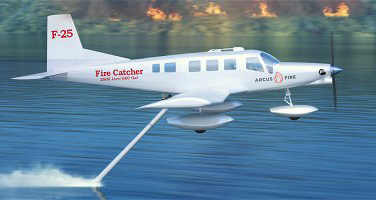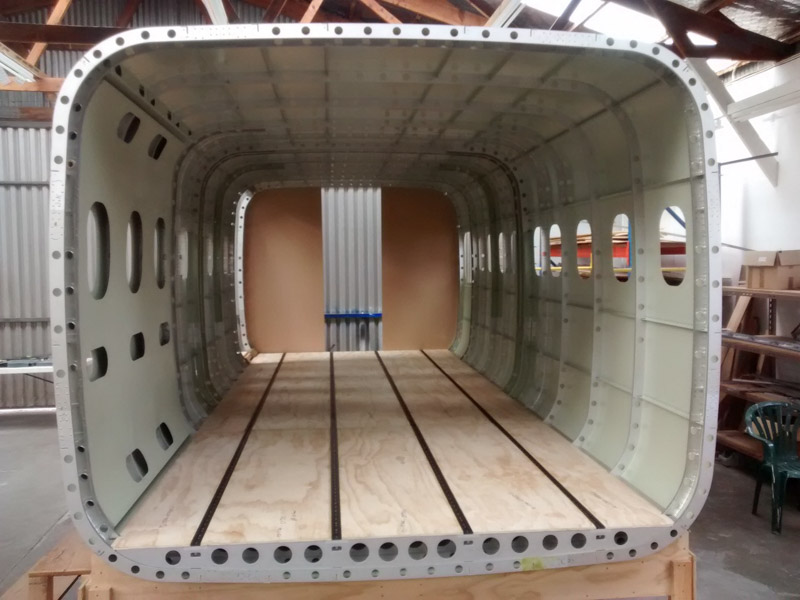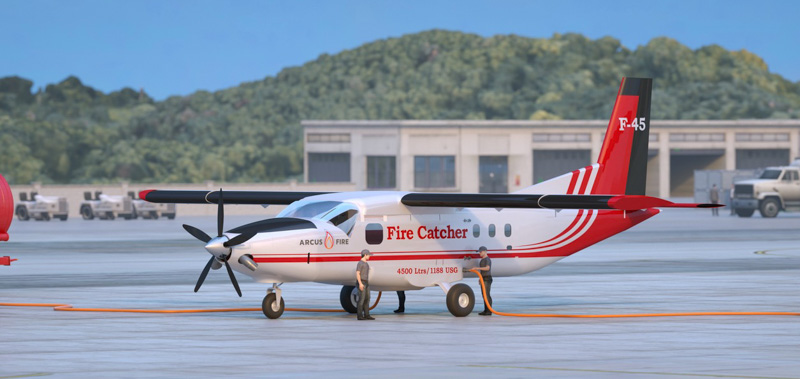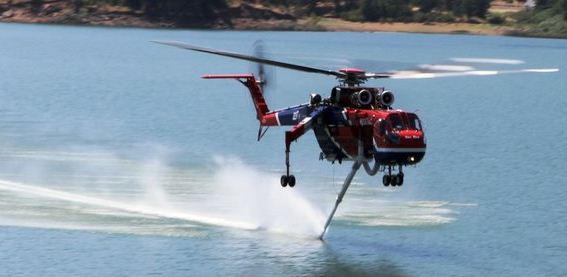October 3, 2020 | 1:45 p.m. MDT

Three companies are collaborating to design and manufacture two new versions of single engine air tankers (SEAT).
A UK company, Arcus Fire, is coordinating the projects which are designed and built by two New Zealand companies, Flight Structures Ltd and Pacific Aerospace.

Flight testing is scheduled to begin soon of the smaller of the two aircraft, the F-25, which is capable of carrying up to 660 gallons. It is a modification of Pacific Aerospace’s Super-Pac XL utility aircraft. The companies are working on CAA/CASA/FAA Certification and expect the air tanker will be available in 2021. It will be powered by a Pratt & Whitney PT6A-140A engine.
Construction is in progress of a clean-sheet larger SEAT, the F-45, with a 1,188-gallon water or retardant tank. It will have a high wing and a Pratt & Whitney PT6A-67F engine. Initially it will be a Restricted Category aircraft, but eventually will be certified in the Standard Category with both cargo and passenger variants. The first flight is expected in 2023 with deliveries planned to start in 2024.

The cargo version will have a large cargo door with a flat floor cabin that can take three LD3 shipping containers with a 5,500 lb maximum payload capability. The aircraft will have a cruise speed of up to 190 knots (218 mph) and a 1,000 nautical-mile maximum range. The 19-passenger cabin will have full stand-up headroom and double abreast single-aisle seating.
FlightGlobal reported the pricing will be $4.2 million for the F-45 and $2.2 million for the F-25.

Neither the F-25 or the F-45 are amphibious, but they can be outfitted with a scooping tube, or as Erickson describes it on their Air-Crane helicopter, a “scoop hydrofoil attachment”. A Blackhawk operated by HP Helicopters also has one of these devices.


Was this concept not tried by an outfit in Australia?
Aero-Tech, using an AT802 platform?
I never did hear if it was a success or failure, I assume the latter as I do not see the concept being utilized in the field.
Col Pay was killed in December 2007 trialling the 802 with skis fitted. Don’t know if the concept has gone any further.
1959 using a Martin Mars as a water bomber? That must have really been on the edge of insanity. I have worked the figures. A 737 could be a water scooper. An internal tank with 5000 U.S. gallon capacity would allow 3000 to 4000 gallons to be “scooped” with no discharge of water enhancement chemicals into the water source. The size of the boom and bucket would be relative to the size of the aircraft capacity. Thirty seconds scooping at 130 knots above the water source should be sufficient to fill the tanks, 3000 to 4000 U. S. gallons. Tires, brakes, events (power plant starts) would be subject to less cycles of take offs and landings. The tanker would be automated to maintain altitude above water and airspeed.
I’m amazed PAC haven’t used the wing design that has made the Fletcher and Cresco such a wonderful aircraft.
Hi Tony,
For the F-45 It’s a Flight Structures Ltd design not a PAC design – they are on the same airfield but its from a different design authority. But agree the Cresco / PAC is a fabulous aircraft.
Today 2 x Cresco’s have been fighting the Oahu fire in New Zealand – 60 second turnaround time from brakes on to brakes off loading 2000 litres through the hopper. The Cresco has the PT6-34 and lower payload of 2000 litres of water – our new F-25 under STC will be powered by the PW140a and have a 2500 litre water/retardant payload also with a new firegate.
An exciting project. I had the chance to visit the Pacific Aerospace a few years ago in Hamilton NZ, and it is quite a sight to see. Pretty much everything on the plane, except the power-plant and some systems, is made in-house.
I work in Europe now, but is there any chance an additional flight loads/structural engineer be needed on the design team in the near future?
In any case, all the best for these two planes and the team behind them.
Just need a big lake / pond for a KC 135 – we need 60 seconds @ 95 knots for a full hopper tank
Would love to see a 733 Firetanker with a scooper though – give us 5 years and you never know!
My parents owned a crop dusting company in central California and started testing with the same concept as seen on the Firecatcher, 1963. Work great, the only draw back was pesticide calibration, never got it just right. The pilots as I remember didn’t care for the scoop idea, we called it the ram injection system. The pilots wanted to smoke between loads. Always thought that a similar approach to water scooping with a large air tanker i.e. DC 10 would have merit. On the same page as an Air Force KC135 aerial refueler with its refilling boom. Water is level so altitude hold would be of little concern. Too far out of the box?
Hi Dennis,
Restricted Cat has different weights compared to Standard Cat so no comparison can be made between LD3’s / Pax and Fire Ops – Mil spec could also increase further if required.
The empty weight of the aircraft in standard cat will be quite a bit higher due to being IFR certified as well as heavier interior etc for crashworthiness….
Thank you Bill – much appreciated
Re: F-45 proposed aircraft. LD-3 containers typically have 3500 lb gross weight so 3 would weigh max gross of 10500 lbs; which would match up more with stated 1100+ gal proposed retardant tank capacity. Seems like a reincarnation of Ayres Corp LM200 Loadmaster w/o twin engine/single prop system. Consider this aircraft for potential forward support aircraft for NATO bases vs Twin Otter use put forward by Pentagon types on War on the Rocks web site??